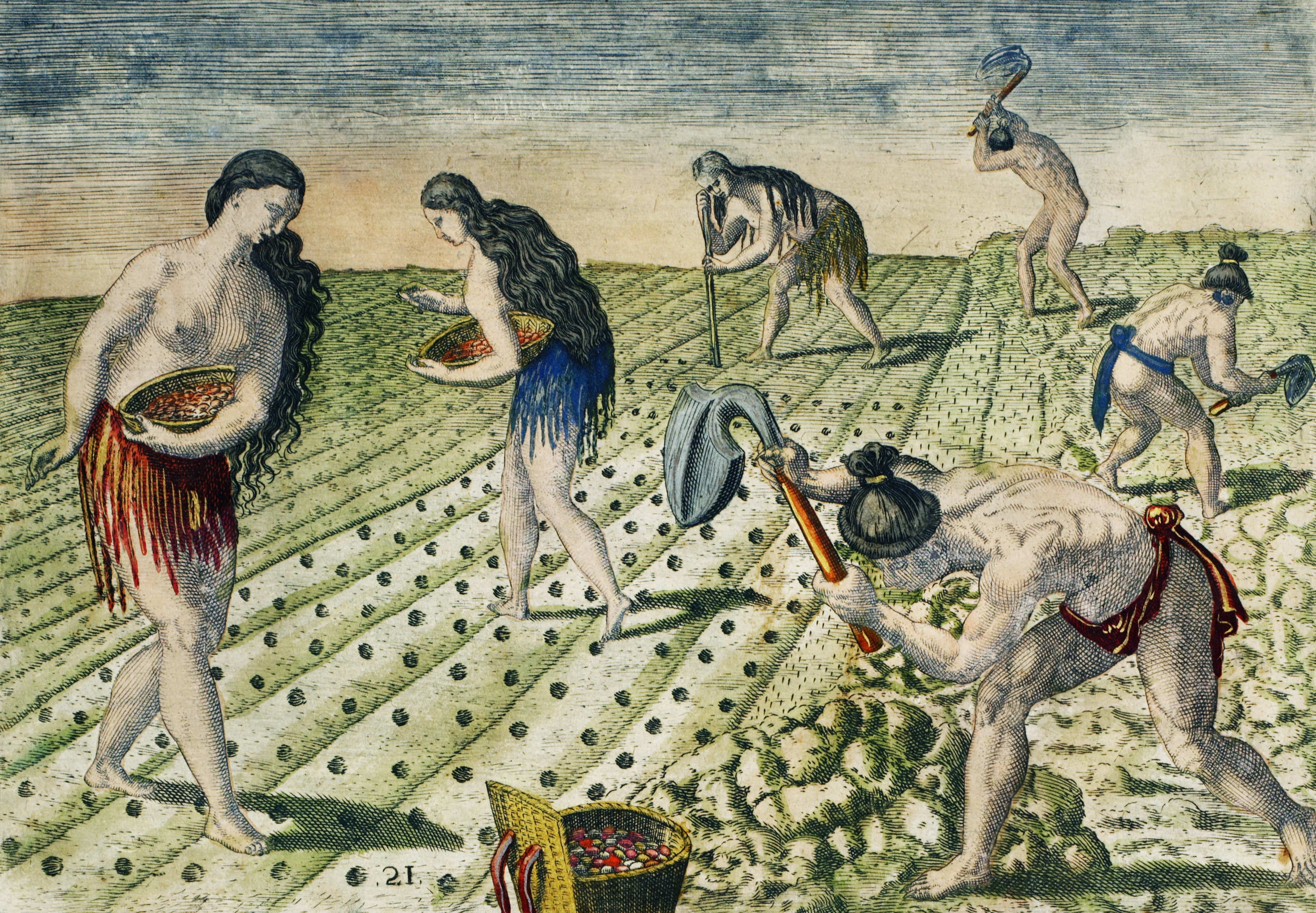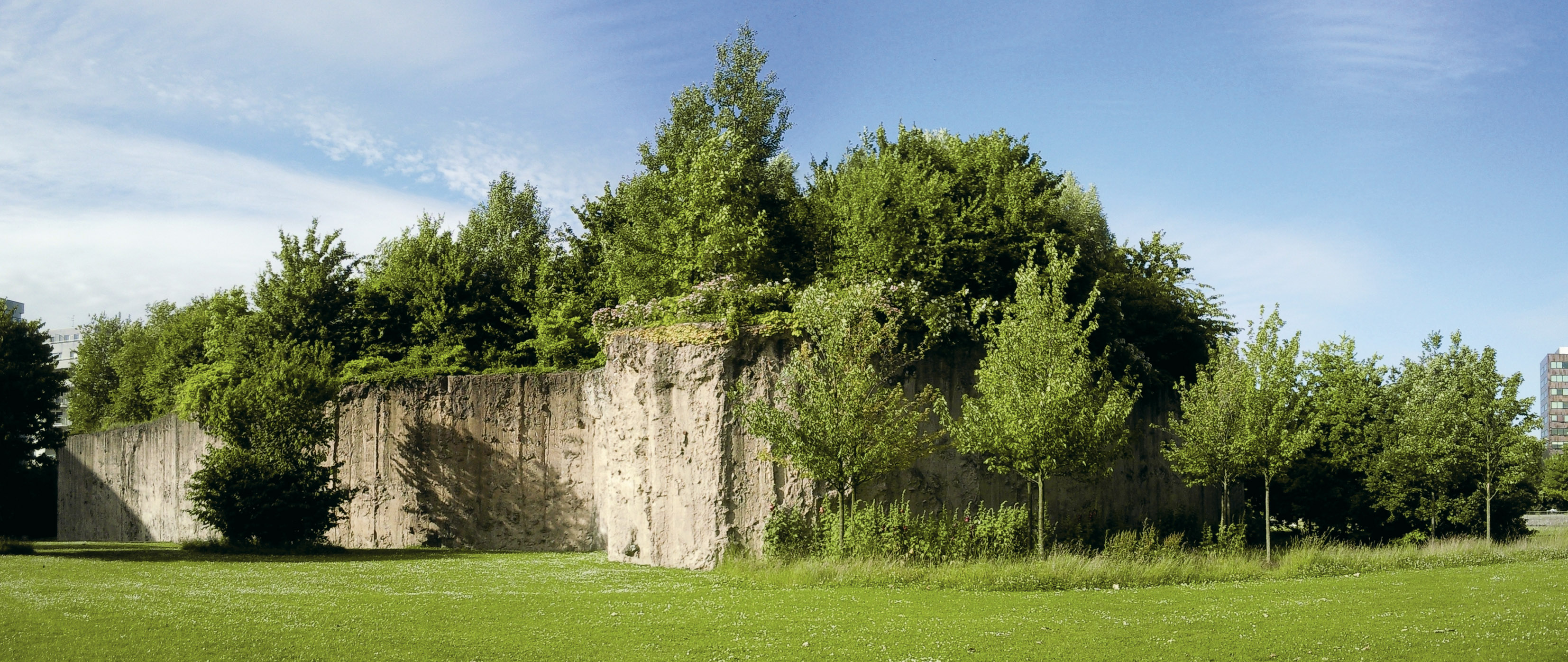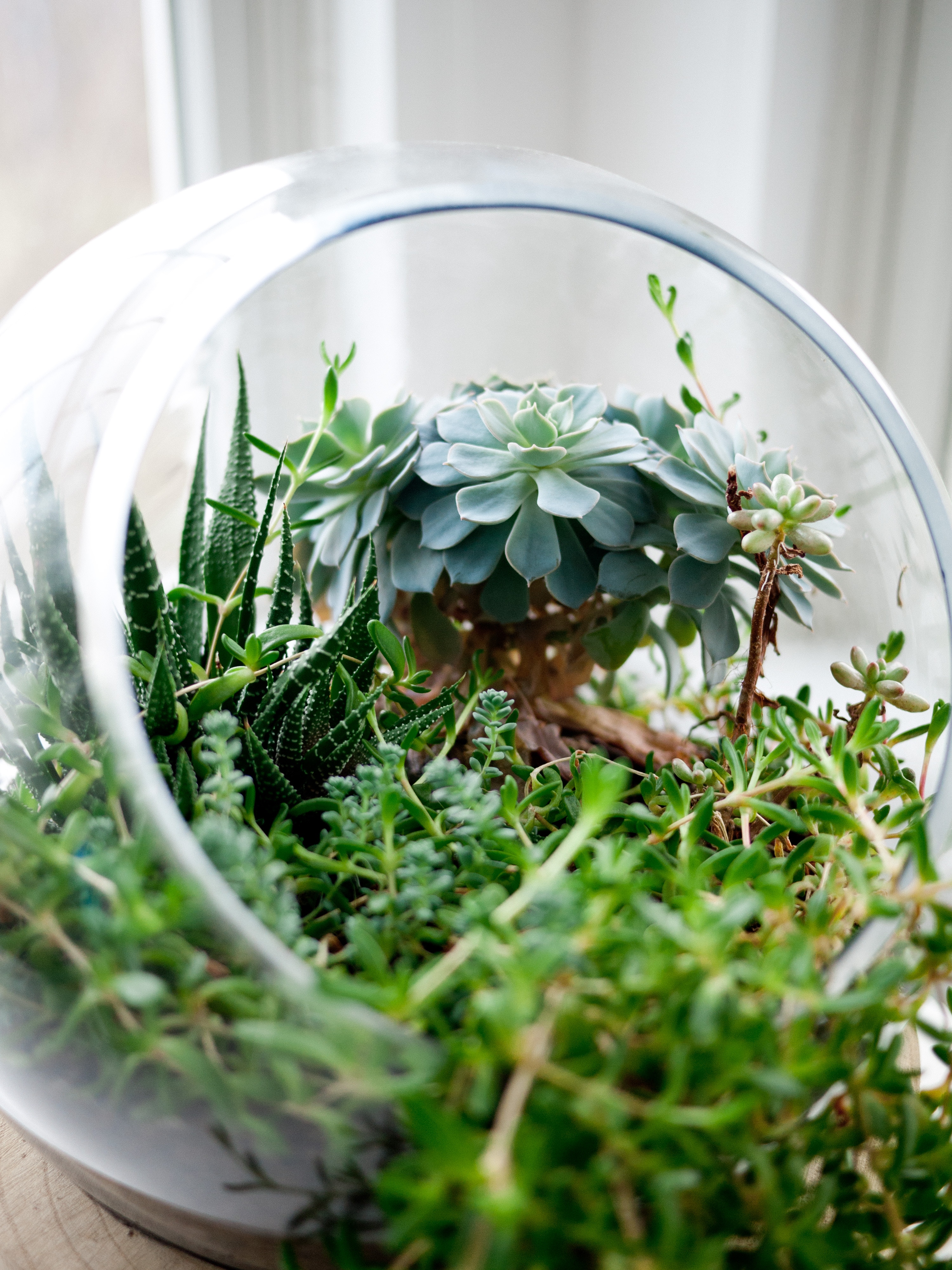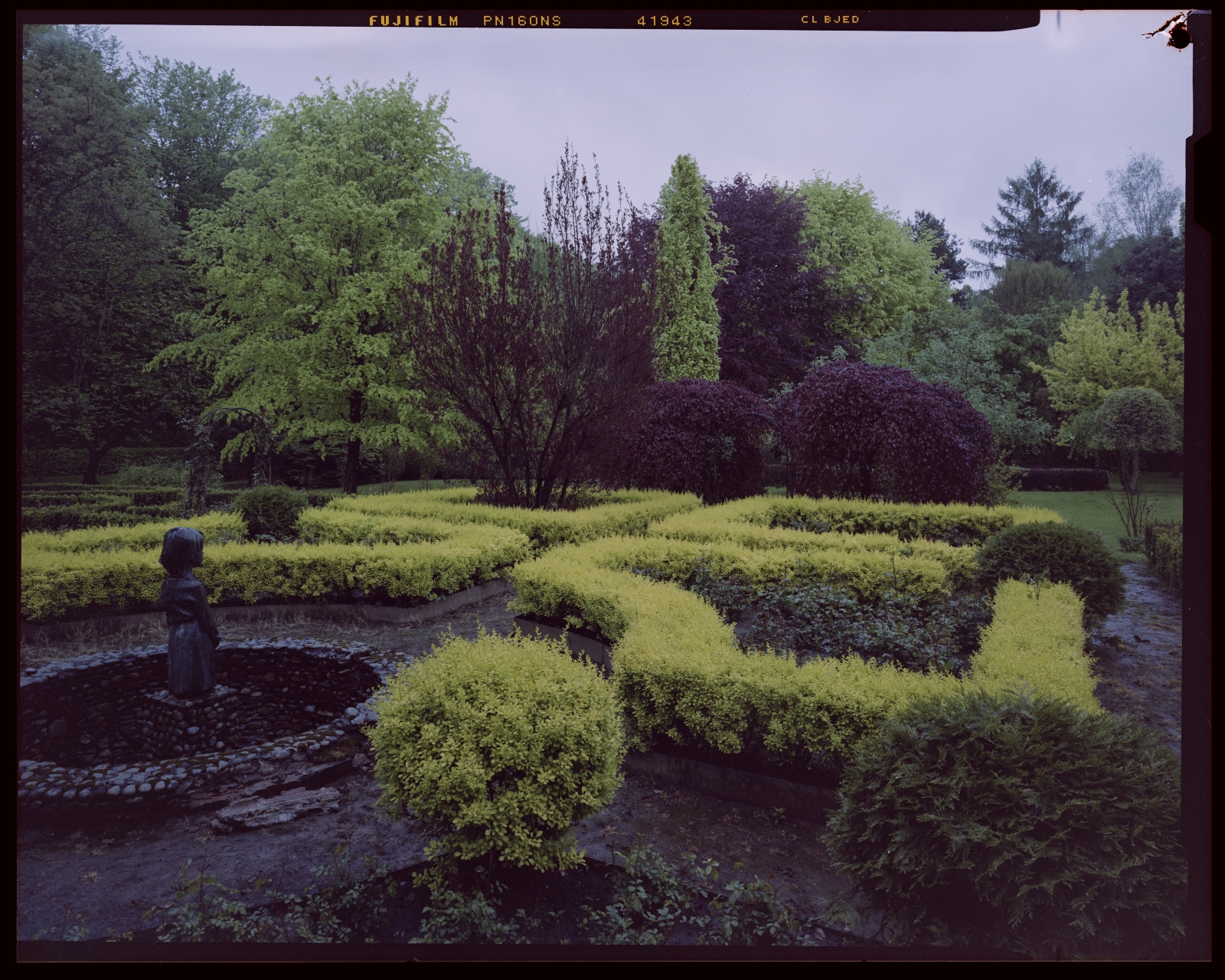
Witold Szwedkowski, poet and Urban Guerrilla Gardening activist, talks about backyard policy, the spade as a tool of rebellion, and the subversive potential of the pumpkin.
Let’s start with a mindful walk. Think about what you see – how many trees do you pass, what are they, do you know them? The guerrilla needs to survey their area of operation. They must estimate the strength of the enemy – the enemy being the excessive use of concrete. They must sound out the weak points and attack there, firing off seedlings, plunging in a shovel. The guerrilla does not lash out at officials, drivers, or those who are disgruntled at the sight of falling leaves. The guerrilla is against the overuse of concrete – vast stretches of granite, oceans of asphalt and rivers of bitumen. These are the things that leave cities lacking in greenery. And we fight lack of greenery guerrilla-style.
Marta Anna Zabłocka: Why ‘guerrilla’? It’s not the most obvious word to pair with ‘gardening’.
Witold Szwedkowski: Guerrillas are associated with insubordination and illegal activities. But it needn’t be that way. The guerrilla movement involves civic, spontaneous, grass-roots activities that are born of opposition or objection. It indicates a general will to change. Guerrillas might be young people who feel angry and rebellious, or older people with their lives in order who want to improve the reality around them, acting on behalf of their children and grandchildren.
Urban guerrilla gardening is a civic responsibility favouring greenery in public spaces and the deliberate planting of trees and flowers so that city dwellers like us are better off. It’s nothing new, nor is it a Polish idea. In fact, I came across this term many years after I started my activities. And although there are plenty of guerrillas around, sometimes you have to give a new meaning to the known in order to demystify and revive it, allowing it to materialize in the public consciousness. The first time I came across the term ‘urban guerrilla gardener’ in Zielone Miasto magazine, I thought: “Oh, that’s bang on!”
So where did the idea to spontaneously focus on urban greenery at the grass-roots level come from?
To my mind, guerrilla gardening originated in 1969, when the famous student protests took place in Berkeley. People’s Park was spontaneously established on the site of a ruined bowling alley where students used to meet. New buildings were due to be built which were not for student use, so they revolted. They brought rakes, planted a few plants, and it went from there. Soon more community gardens were established. The catalyst was greenery, and it started in Anglo-Saxon countries.
As you mentioned, the first park was created on the basis of political opposition, part of a demonstration of the widespread dissatisfaction of students. But when we look at contemporary Polish cities, it seems guerrilla gardening is mainly apolitical.
You don’t need to be politically engaged to do something good. We’ve all heard of urban policy, but there’s also such a thing as backyard policy. If I do something in my backyard that is good and serves my neighbours, I know that after a while they’re bound to get involved. With guerrilla gardening, our civic actions bring results very quickly – they become noticeable. In my many years of operation, I’ve seen that these activities tend to draw people in. I decided that I wasn’t going to try and persuade anyone to do urban gardening. You can lead a horse to water, but you can’t make it drink. Guerrilla actions reach some people and convince them very quickly, because they’re fun, appealing and exciting.
Okay, so what does urban guerrilla gardening actually involve?
I used to think that guerrilla activities meant planting trees where there were none. But there are actually a lot of guerrilla movements and different styles of urban gardening. Guerrillas are a bit like street artists, they have multiple means of expression. The common denominator is undoubtedly to act without the permission of local authorities, managers or administrators to improve the quality of public spaces. I would also define guerrilla gardening as the tending of green spaces beyond one’s own terrain. A kind of shortcut, a quick action to regenerate lost greenery. That’s key. But we must remember that if certain ventures, despite positive intentions, are carried out without knowledge of the basic issues of landscape architecture and ecology, it can do more harm than good. Some species are invasive and harmful, and should not be introduced. Guerrilla activity also involves educating oneself and others on these matters.
Let’s cut to the chase – what guerrilla actions can we undertake? The first activity that comes to mind for me is looking after the neglected city flowerpots. They were installed by someone with good intentions, then forgotten. Guerrillas could adopt these pots, plant flowers and restore their original function. You also mentioned tree planting – but you can’t do that everywhere.
There are these spots, often between the pavement and the road – inconspicuous little squares, trodden down, driven over, sometimes covered with some kind of aggregate or overgrown with weeds. These are places where a tree used to grow but has been cut down. Its roots remain, which is why new trees weren’t immediately planted in its place. After some time, usually a few years, when the old roots have decayed, replanting can take place – but whoever’s in charge of the greenery often forgets about it. Trees are rarely cut down because of collisions with overhead power lines. It’s usually because of age or disease. The places I’m talking about are places specifically designed for trees to grow. You just need to follow a simple rule: plant what grows nearby. In a jagged avenue of lindens, we don’t plant a maple. We don’t place a spruce in a row of plane trees. We get to know the area so that we can confidently plant in keeping with the surroundings.
On the other hand, the city flowerpots were designed for a specific purpose and, in my opinion, it’s not just that we can, but that we ought to plant them up.
These actions are safe and rarely arouse any objections. Someone before us has already thought about these places for flowers and trees. It’s just that they’ve been neglected.
Where can we get saplings? You can’t just dig up a tree from one place and plant it where it seems to fit better.
You can safely take them from areas that are sometimes called the ‘fourth nature’, i.e. wastelands. As a result of deindustrialization, the character of some places changes – plants enter and self-propagate in an uncontrolled manner. There are also areas intended for development where trees are due to be cut down in connection with a planned investment. Self-seeders with trunks that are several centimetres in diameter have been growing in these areas for several years and it’s a pity for them to go to waste. I also look out for wild car parks, demolition sites and abandoned warehouses where interesting specimens have managed to grow. Or you can grow a tree yourself – there are people who get great satisfaction from helping to grow a seed or acorn into a maple or oak. And that’s hardly surprising.
I’m wondering about forms of guerrilla gardening that can be practised quietly and casually, without devoting so much attention to them. There used to be a fashion for making seed bombs.
Those bombs contain seeds from species typical for green areas, as well as the materials to help the seeds develop – fertile soil, sometimes peat, sometimes humus. There’s also clay to hold moisture. And that’s what the balls are made up of. We throw them in hard-to-reach places where we want new plants to grow. They’re usually used to sow flowers and grasses.
I’m sceptical about seed bombs. I know they look spectacular, but do they actually work in our realities? But they’re definitely unusual. Throwing them or firing them from a slingshot excites the imagination. The bomb also fits in well with the guerrilla ethos. We shoot, the bullet flies through the air and inundates the space where we want our charge to grow. Seed bombs were invented in the 1970s by Liz Christy, but they were constructed differently back then.
How?
The first bombs were in paper bags. I wonder how contemporary Poles would cope with the idea of someone filling paper bags with a mixture of soil and seeds and scattering them around… It sounds like littering. In Christy’s era in the US, people thought differently – paper decomposes anyway. Now, seed bombs are made by forming balls of seeds and mud.
Preparing seed bombs can be great fun, as well as a pretext for environmental education. We make them with our kids, analysing the ingredients, then ‘sowing’ them while we’re out on a walk.
You could also water something when you’re out on a walk. Few people think about it, but droughts are a real problem. Sometimes, companies that have planted over a wide area in cities don’t want to drive around watering the trees – it’s not always profitable for them. Trees that don’t take root and wither are covered by a warranty, so the company replaces them with new ones after a while. Economic factors take precedence over reason. If we don’t want to waste time waiting for withered trunks to be exchanged, we can water young plants. Contrary to appearances, this is also a subversive activity. In places like the border of the road and the pavement it’s really needed, and the trees won’t water themselves.
Why do these young trees dry out so quickly?
Sometimes the trees that are planted are too big. It’s harder for them to take root in new places. On the other hand, small specimens – below 10 centimetres in circumference – are very susceptible to animal excretions. Dog urine can actually poison these trees. Saplings are also easier to damage mechanically, with a mower or when parking a vehicle, for example.

But we guerrillas can protect these young trees, and not only by watering them.
Of course, you can look after the root crowns by covering them with cardboard or plastic bottles, which offer protection from inattentive mowers. It may seem like an exaggeration, but there is another, very easy way to protect and nurture young trees. Even in the 1980s, care was taken to surround newly planted trees with so-called ‘black fallow’, i.e. loose soil without weeds. The weeds – or undesirable plants – that grow next to saplings compete with them for minerals and water. Turf around young trees is not beneficial to them in the least. It’s best to maintain a layer of loose soil. As a result, the sapling doesn’t need to be watered as often. It provides very effective insulation and protection against the evaporation of water from the ground. Removing weeds and undesirable plants in a particular place is also a way of protecting greenery. Civic vigilance helps too – we can make mowers and neighbours aware of where plants are located. On the whole, people take this information on board.
Let’s recap on the guerrilla activities that we can practise: securing and watering plants, weeding, caring for city flowerpots, throwing seed bombs, planting trees. But this doesn’t cover the whole range of possible activities – for example, tower block planting.
Of course, that’s my favourite subject. In the past, you didn’t really have to persuade anyone to do it. I remember, it was the 1980s; there was a commotion around the blocks where we lived. My father’s friend said: “Grab a spade and get digging, we’re setting up gardens.” The whole of the Retkinia estate in Łódź, 80,000 residents, worked on it together. Every town has blocks of flats where, thanks to a spark of civic action and a bit of disobedience, tower block gardens were set up spontaneously. It was quite a phenomenon. There was a greater sense of community between neighbours, and the exchange of seedlings and crops flourished. Vegetables were often grown in those areas near the blocks to increase variety in the diet and to supplement supply shortages. The production of plant-based foods was standard.
The Urban Guerrilla Gardening Facebook page presents the movement’s creed: “To repair the city. To turn its lawns and flower beds into miniature oases of beauty or sources of food for people and animals.” What’s with the animals?
When I wrote that, I was thinking of insects, like solitary bees and other pollinators. They’re not valued in Poland. For example, relatives of the honeybee, such as Megachiles, mason bees and Colletes. The appearance of certain less popular species is always big news, as was the case with the blue bee. If we look after what’s outside the window, or around the block – by sowing buckwheat, poppy seeds or wildflower meadows – then we’re also looking after the insects. If we plant shrubs, their fruit can provide food for sparrows, waxwings and bullfinches. We shouldn’t make them dependent on being fed. Hedge shrubs are disappearing in cities, but they provide shelter for small birds with nowhere to escape from magpies, pigeons – which are not such peaceful birds – or cats.
Biodiversity is key – and let’s remember that we have a direct impact on it. We don’t know what the consequences of a decline in biodiversity will be. It might be that our existence would even be threatened if we lost those annoying little insects that we complain about in the summer. After their extinction, it could turn out that they played a more important role in the ecosystem than we thought. Biodiversity is also important for our mental health – the presence of birds is relaxing, people like their singing and chirping.
This biodiversity also includes non-obvious plants in unusual places. Let’s imagine we’re walking around our area in summer, when suddenly, there in the car park, we notice a huge vegetable typically seen in the garden, a fruiting pumpkin… What could have happened?
Marvellous! Someone realized that the pumpkin is a magic vegetable, the fruit of which may not turn into a carriage, but nonetheless into something very positive. I think the pumpkin is the future of gardening, it grows from a maintenance-free seed that turns into a plentiful plant with spectacular ornamental or edible fruit.
As it happens, I’d been thinking about a ‘guerrilla plant’ for a long time. Sowing sunflowers – as proposed by UK-based guerrilla gardener Richard Reynolds – is great, but I wanted planting in public spaces to be pragmatic. I wanted the plant to provide food for animals and people. One day, out on a walk, I noticed a pumpkin growing behind a bench – someone must have thrown a seed there and it grew from that. That’s when I thought that the pumpkin could be that plant. It’s a vegetable loved not only in Poland, but also in the East, and it actually comes from America. I got some people together a few years ago and we sowed them everywhere.
And that was the birth of World Day of Sowing Pumpkins in Public Places, which we celebrate on 16th May.
Yes, first we have the Ice Saints: St Pancras, St Servatius and St Boniface, followed by ‘Cold Sophia’, which we celebrate in Poland on 15th May, Polish Forget-Me-Not Day, and then 16th May is World Day of Sowing Pumpkins in Public Places. The pumpkin is the perfect vegetable for these places – a non-invasive annual that fights for its own space. The earth around pumpkins doesn’t need to be weeded. Sure, it has different soil requirements, it needs both water and good sunlight, it’s demanding when it comes to temperature, it likes space – but somehow, it copes. Over the years, I’ve seen dozens of spectacular pumpkins planted in non-obvious, surprising places. It’s clearly taken off.
The pumpkin has a subversive potential, it’s not sown like flowers. Sowing pumpkins reveals the magic of doing something unusual. We’re doing this in places that aren’t intended for sowing pumpkins – we’re interested in pots, lawns, and somewhere along the way they get planted. The result is not without significance – it’s a magnificent plant, you can’t walk past it with indifference. I noticed that mowers avoid these guerrilla-sown pumpkins, they’re afraid of them. They can see that it’s clearly not burdock or a weed, it’s something else, something that’s blooming spectacularly. As I mentioned, the pumpkin is an annual, non-invasive vegetable; it doesn’t harm or disturb designed plant arrangements. It has a high pollen capacity, so it’s good for insects and pollinators. I haven’t found any disadvantages of the pumpkin so far.
It doesn’t always bear fruit, it’s quite a fussy vegetable.
It can be, but we treat it as an adventure. Sometimes it climbs the fence, leaning out of the pot we sowed it in. And so there in the city, unexpectedly, you have an orange bulb hanging from a fence. Pumpkins grow on the green strips between the pavement and the road. They cover forgotten piles of rubble.
They squeeze into enclosures where they bear fruit, but they look trapped, as if they’d been dropped in a seed bomb. The pumpkin stokes my imagination. It is an impressive plant: plate-sized leaves, large, pretty flowers, shoots pushing into hard-to-reach places. It looks like a creature crawling around, trying to take over the land, but it fails because it only lives for a year. It’s actually quite touching that this plant puts so much effort into producing fruit only once.
Pumpkin sowing involves this theatrical division of space, but also an element of fun. What other actions have taken place as part of guerrilla movements?
On Kościuszko Street in Gdynia, there was an old lady with a yellow bucket. She tended a tree that had been planted by an anonymous couple. She really cared for it. The tree was planted just where it should have been – between the pavement and the street. And it would probably have been just one of hundreds of such vigilante-planted trees, if not for the fact that another local resident was taking care of it. During last year’s heatwave, she came to water the tree every day. It’s a really beautiful example of neighbourly care for greenery.
There was another nice action led by a group of guerrillas from Jeżyce. They planted ornamental plants in undeveloped land, but in addition, they set everything up so it looked like a small green architecture building. All in the green strip between the pavement and the road. Several community gardens have also been spontaneously created in Poznań, it’s a very active community. Interesting activities are happening in Lublin too – attempts are being made to regenerate the riparian forests, which had been treated as a jumble of weeds and destroyed, because short-lived trees grow there, such as willows and poplars. An excellent initiative. Urban guerrilla gardeners are also active in Toruń. They’re systematically recapturing bits of space from wild car parks.
What about abroad?
That’s a big question. Take, for example, ‘gangsta gardening’ and its founder Ron Finley, who works in Los Angeles with youth at risk of social exclusion. Or the activist from St Petersburg who’s fighting with officials for permission to cultivate tower block roof gardens. This is much more popular in European countries, but in Russia it’s met with resistance – the fact that it’s a fashion, that it comes from the West. But the blocks are constructed to withstand tons of snow pressure, so the roofs are perfect. In Finland, they’re growing watermelons. There are countless ways of implementing gardening ideas in cities. Gardening serves many purposes and takes numerous different forms. It is an amazing, inexhaustible source of inspiration.
Parts of this interview have been edited and condensed for clarity and brevity. Translated from the Polish.
Witold Szwedkowski:
Born in the second half of the 20th century in a non-existent hospital in central Poland. He is a graduate of several schools, including a couple of universities. He’s a guerrilla gardener who cultivates, propagates and animates. Since he began exploring the inexhaustible layers of concrete poetry, he considers himself a neo-concretist. He also counts reaching middle age as one of his achievements.









